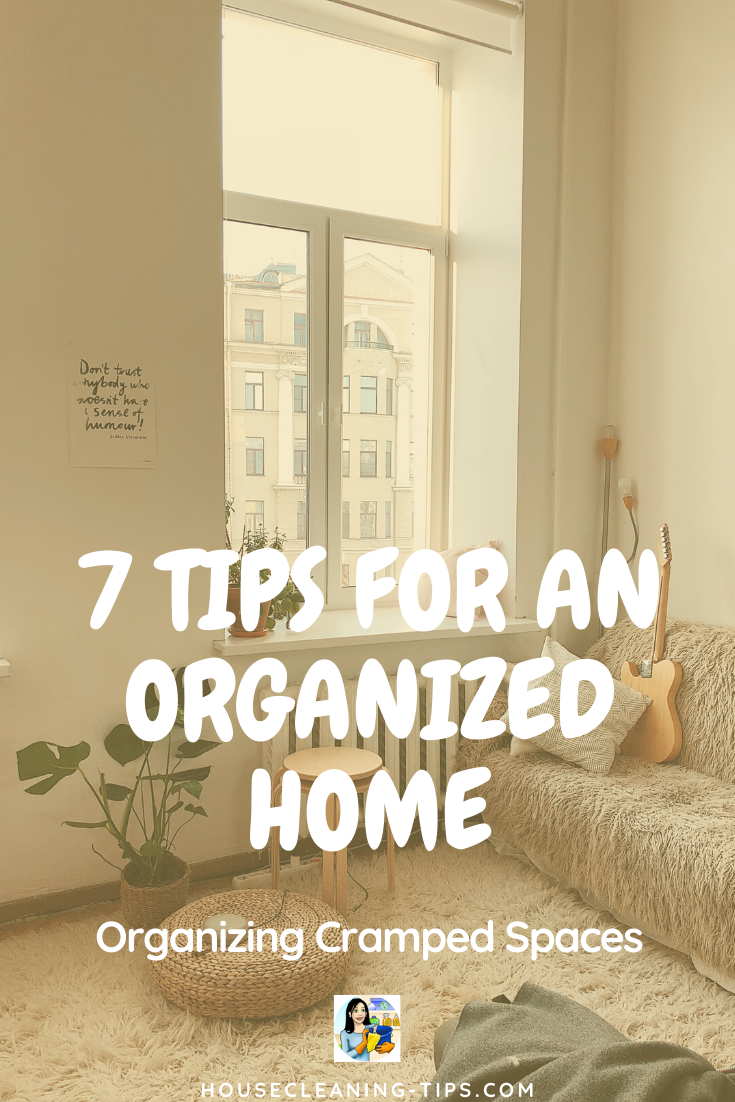- Are you new to housecleaning-tips.com: Start Here
- Claim your free copy of our Special Report: "How To Clean Your House: Advice From the Past"
7 Tips To Help You Organize Cramped Spaces
Not everyone lives in a twenty room mansion. Most of us find ourselves in cramped spaces and running out of space for our stuff.
This is especially true if you live in city apartments, and small houses. Living space is at a premium, not to mention storage space.
Here are some simple solutions for cramped quarters:
First and foremost: declutter.
If you follow the DOC method - you know that D stands for declutter followed by O for organize.
So - get some decluttering done first to avoid becoming a professional stuff manager
.Do you really need that third winter coat, or would it help you (and someone in need) to get it out of your closet?
What about that deep fryer you never use? Someone would snap it up in a second in a resale shop. And the umpteen mismatched bath towels you have accumulated in the last ten years? Replace them with a nice new matched set, and get rid of all of those oddballs.
Be creative about storage.
In small homes, the kind of furniture you choose and where you place it can be your biggest asset. Don't be afraid to put an antique dresser in the entry way; the top drawer can become the place where your keys and gloves reside while not in use, alongside the telephone directory.
The other drawers can hold hats and scarves, even bike helmets and baseball mitts. You can use the top of the dresser like a mantle: display photographs, store books, or show off your folk art bird collection. A dresser with a mirror attached or on the wall above it will make the area seem bigger.
Shelve it.
A great way to have a place for everything and everything in its place is to put up shelves, especially in unexpected places.
You might be able to squeeze one above each of the windows in your kitchen, for example, and that is where you can put grandma's pretty teapot, the lovely jams you canned yourself, wine glasses, cookbooks, and other smallish things.
It will free up a lot of cabinet space.
Go down under.
There is quite a bit of unused space under your bed, and under-bed containers are very easy to find. Think about elevating your bed slightly with pieces of 4 x 4 lumber placed under the legs, and you will gain an extra four inches in height, allowing for larger items to be stored beneath. Best to store items such as holiday decorations, off-season footwear, gift wrap, and other things you will not need to access frequently.
Turn, turn.
Rotate your wardrobe in and out of your closet according to the season, instead of trying to keep everything all in one place. Purchase pest-proof plastic containers (do not use cardboard boxes) and label the contents so that you can easily access what you need. Then, simply reload the container with the off-season items, assessing them as you load as to whether or not you should get rid of any.
Eliminate duplicates.
Don't save more than one set of cruddy painting clothes. When you upgrade to a nicer coffee maker, don't keep the old one as a backup. Dont keep more than one grocery bag full of rags. If you buy a new set of dishes, box up the old set and find a new home for it.
Use it.
Identify areas in your home that are not being used at all. Doors are a good example. You can store the ironing board on the back of a door using a special hanger, and there are shoe storage and DVD storage systems available for doors, too (hands up if you still have DVDs ✋).
Spice jars can be housed in bins made to be attached to the inside of cabinet doors. Instead of a coffee table, use a trunk or a storage ottoman; it can be home to games, DVD's, blankets, pillows, you name it.
With a little creative thinking outside the box you can free up a bit of precious space, and your small home won't feel like a box!


